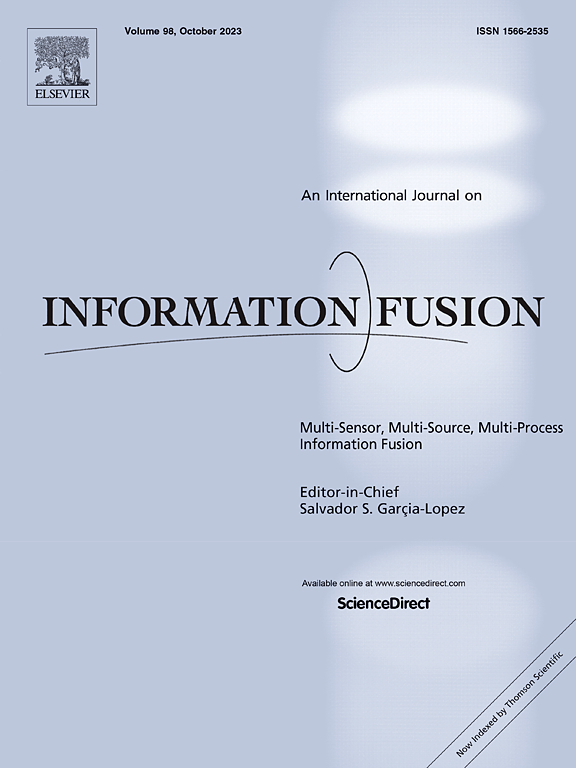An ensemble clustering method via learning the CA matrix with fuzzy neighbors
IF 14.7
1区 计算机科学
Q1 COMPUTER SCIENCE, ARTIFICIAL INTELLIGENCE
引用次数: 0
Abstract
Although existing studies have confirmed that ensemble clustering methods based on co-association (CA) have been widely employed successfully, they still have the following drawback: the clustering performance and stability of ensemble clustering results heavily depend on the CA matrix. To enhance clustering performance while maintaining the stability of ensemble clustering results, an ensemble clustering method via learning the CA matrix with fuzzy neighbors (EC–CA–FN) is proposed in this study. First, EC–CA–FN constructs an accurate CA matrix by using both intra-cluster and inter-cluster relationships of pairwise samples from all base clustering results. Second, to improve the stability of ensemble clustering results, EC–CA–FN introduces a fuzzy index and the rank constraints on the constructed accurate CA matrix. This method invents a new ensemble clustering framework that learns the optimal fuzzy CA (FCA) matrix by adaptively assigning fuzzy neighbors of samples, thus obtaining the optimal clustering structure. Third, an alternative optimization method and weighting mechanism are adopted to achieve the optimal FCA matrix and adaptively assign all base clustering results. The experimental results on all adopted datasets indicate the effectiveness of EC–CA–FN in terms of both clustering performance and the stability of ensemble clustering results.
求助全文
约1分钟内获得全文
求助全文
来源期刊

Information Fusion
工程技术-计算机:理论方法
CiteScore
33.20
自引率
4.30%
发文量
161
审稿时长
7.9 months
期刊介绍:
Information Fusion serves as a central platform for showcasing advancements in multi-sensor, multi-source, multi-process information fusion, fostering collaboration among diverse disciplines driving its progress. It is the leading outlet for sharing research and development in this field, focusing on architectures, algorithms, and applications. Papers dealing with fundamental theoretical analyses as well as those demonstrating their application to real-world problems will be welcome.
 求助内容:
求助内容: 应助结果提醒方式:
应助结果提醒方式:


